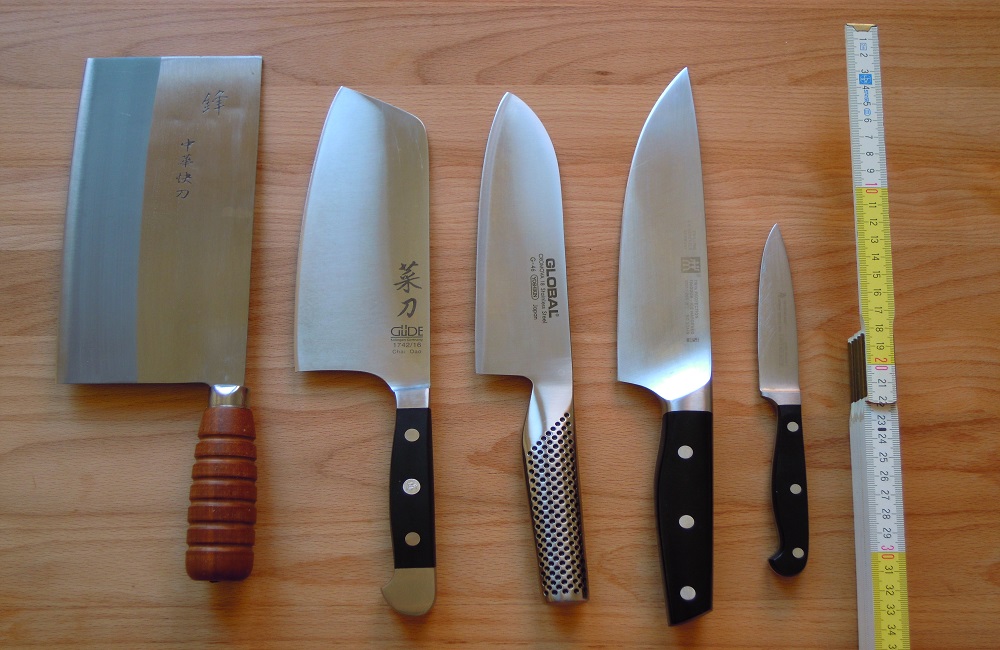The quality of your cooking experience may be greatly enhanced by having the correct kitchen knives. For effectiveness, security, and fun in the kitchen, choosing the best kitchen knives is crucial, regardless of whether you’re a professional chef, home cook, or food fan. You will learn all you need to know about selecting the best kitchen knives from this guide, enabling you to confidently chop, slice, and dice.
Understanding the Different Types of Kitchen Knives and Their Specific Uses
Chef’s Knife
The workhorse of the kitchen is the chef’s knife. It can do a wide range of jobs, from slicing meat to chopping vegetables, thanks to its broad, sharp blade. The chef’s knife, which usually measures 8 to 10 inches, is a necessary and adaptable tool in any kitchen.
Paring Knife
A paring knife is a smaller, more precise tool designed for delicate tasks. Its short blade, usually around 3 to 4 inches, is perfect for peeling fruits and vegetables, deveining shrimp, and other intricate cutting tasks that require control and precision.
Santoku Knife
The Santoku knife, which is Japanese in origin, resembles the chef’s knife but has a somewhat distinct style. The Santoku, with its flat edge and shorter, broader blade, is a great tool for precise chopping, dicing, and mincing. It works especially well for chopping veggies and protein that isn’t bone-in.
Factors to Consider When Choosing a Knife
Material
Performance and durability of the blade are directly related to its substance. Stainless steel is well-liked since it doesn’t corrode or discolor. Stainless steel with a high carbon content has a sharp edge and is more maintenance-intensive. Although ceramic blades are extremely light and sharp, they are fragile and prone to chipping.
Weight
Your experience cutting can be greatly impacted by the knife’s weight. Cutting through difficult ingredients is made simpler with a heavier knife since it offers greater control and stability. However, a lighter knife is more maneuverable and might help you feel less tired after using it for an extended period of time. In the end, it comes down to personal choice, so it’s worthwhile experimenting with various weights to find the one that fits your hand the best.
Handle
The handle is often overlooked but plays a vital role in your overall comfort and control. Look for a handle that fits comfortably in your hand and provides a secure grip. Materials like wood, plastic, and composite offer different textures and aesthetics. Some handles have ergonomic designs that reduce strain and improve handling, especially during extended use.
How to Test a Knife’s Quality and Comfort in Your Hand
Make sure the knife is comfortable and of good quality before making a purchase. Go to a store where you can grip the knife and feel its balance, if at all feasible. Observe how it feels in your hand; is it easy to use and pleasant, or does it cause wrist strain?
Check the blade for sharpness and alignment. A well-made knife should have a straightedge and a sharp point. Press the blade against a surface to see if it cuts cleanly and effortlessly. If you’re buying online, look for detailed product descriptions and customer reviews to get a sense of the knife’s performance and quality.
Maintenance Tips to Keep Your Knives Sharp and in Top Condition
Proper maintenance is key to keeping your knives sharp and ensuring their longevity. Here are some tips:
- Regular Honing: Use a honing steel regularly to maintain the knife’s edge. Honing helps realign the blade and keeps it sharp.
- Sharpening: Depending on usage, sharpen your knives every few months using a whetstone, sharpening rod, or professional sharpening service.
- Cleaning: Hand wash your knives with mild detergent and warm water. Avoid putting them in the dishwasher, as the harsh detergents and high heat can damage the blade and handle.
- Storage Sure you never store your knives loosely in a drawer. Instead, use a knife block, magnetic strip, or blade guard to keep them protected and prevent dulling.
Budget-Friendly Options for Home Cooks, and High-End Choices for Culinary Enthusiasts and Professional Chefs
Budget-Friendly Options
For home cooks who want quality without breaking the bank, there are plenty of budget-friendly options available. Brands like Victorinox, Mercer, and J.A. Henckels offer excellent knives that balance performance and affordability. Look for sets that include the essential knives like a chef’s knife, paring knife, and bread knife.
High-End Choices
Culinary enthusiasts and professional chefs may want to invest in high-end knives that offer superior craftsmanship and performance. Brands like Wüsthof, Shun, and Global are renowned for their precision and durability. These knives are often handcrafted and made from high-quality materials, providing exceptional sharpness and balance.
Recommendations on Essential Knives for a Well-Equipped Kitchen
A well-equipped kitchen doesn’t require a vast collection of knives. Instead, focus on a few essential pieces that cover a wide range of tasks:
- Chef’s Knife: The most versatile knife in the kitchen, suitable for chopping, slicing, and dicing.
- Paring Knife: Perfect for delicate tasks like peeling and trimming.
- Santoku Knife: Great for precision slicing and dicing, especially for vegetables and boneless proteins.
- Bread Knife: A serrated knife designed for cutting through crusty bread without crushing it.
- Utility Knife A mid-sized knife that’s versatile for various tasks, from slicing sandwiches to cutting small fruits and vegetables.
Final Verdict
Selecting the best kitchen knives requires knowledge of its intended usage, evaluation of material, weight, and handle, as well as comfort and quality testing. Investing in a few key knives and caring for them well will improve your cooking efficiency and experience.

